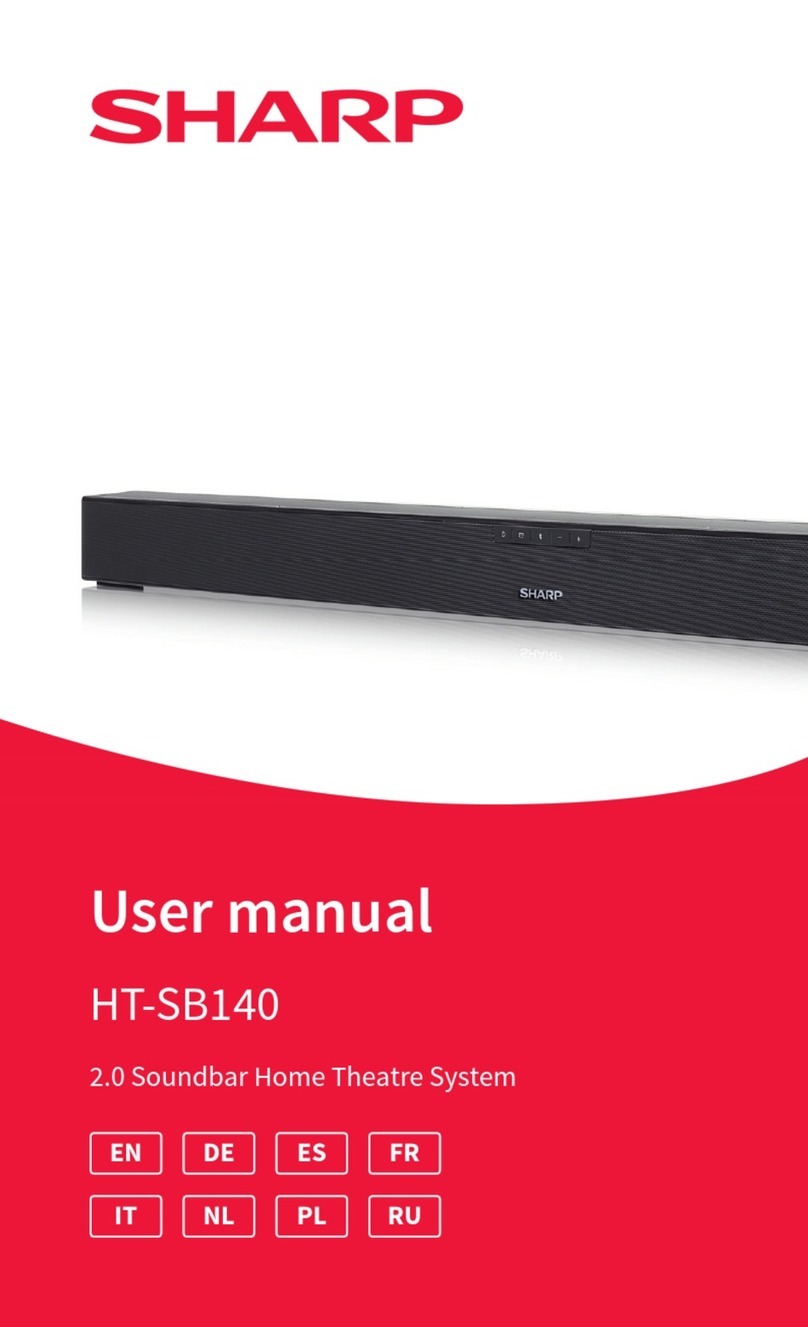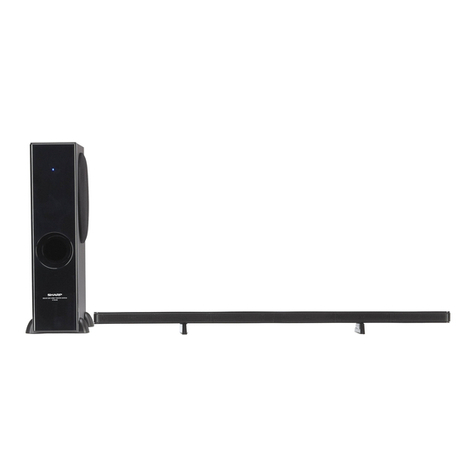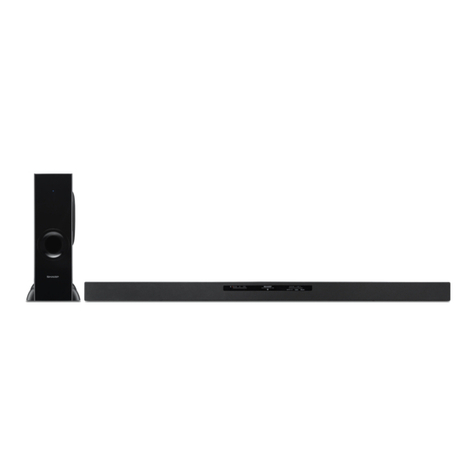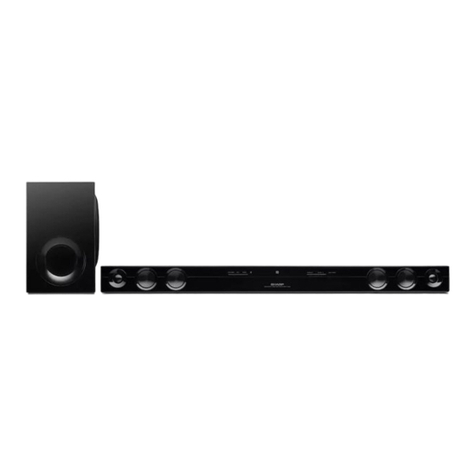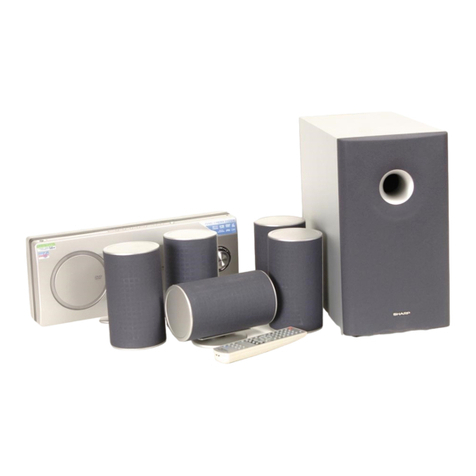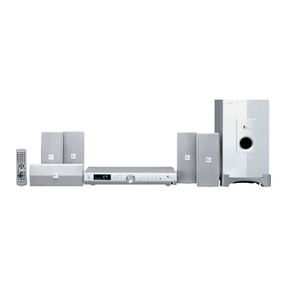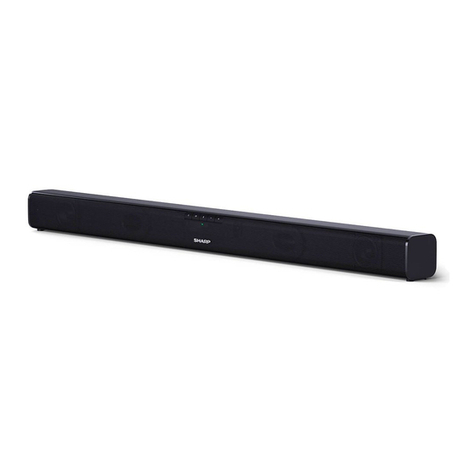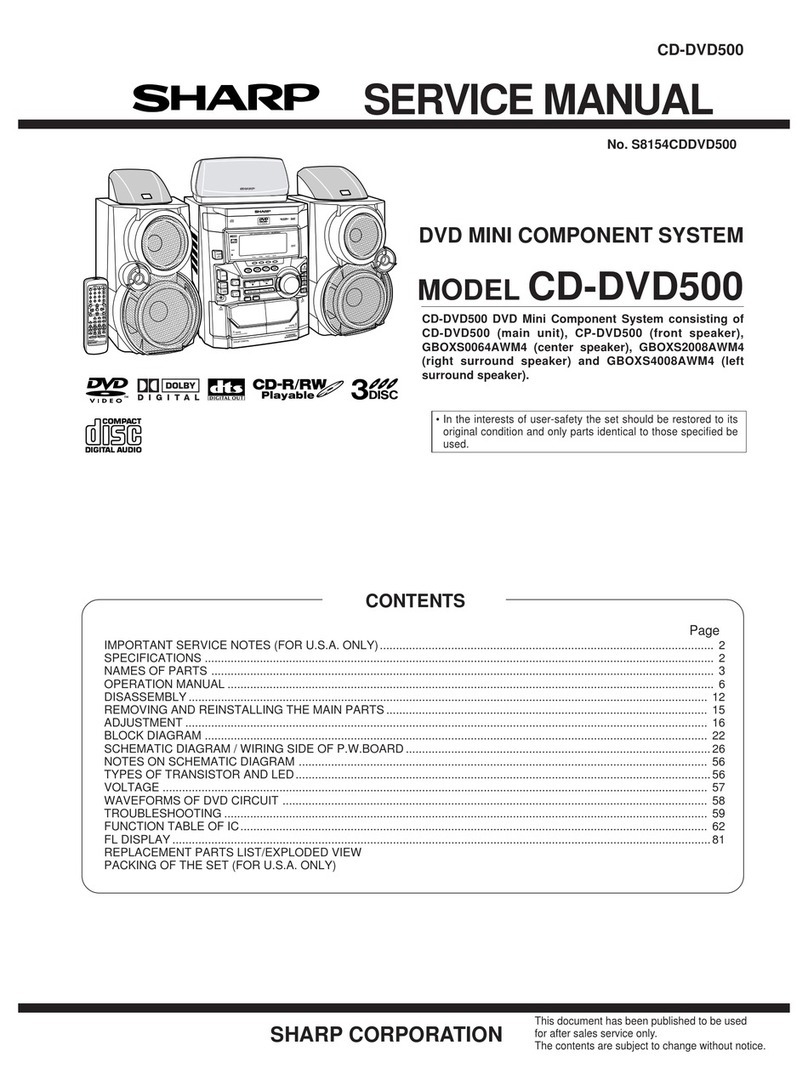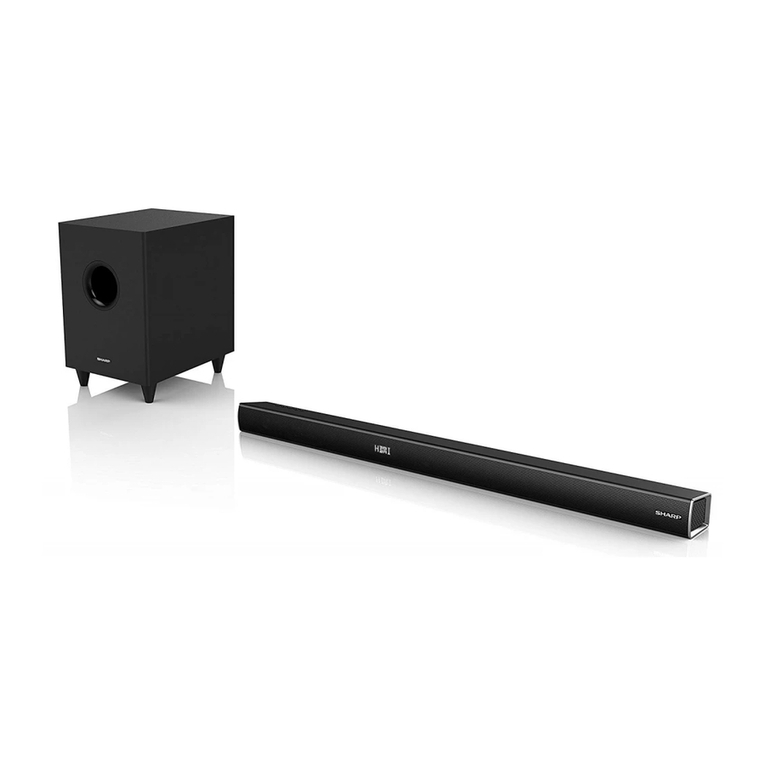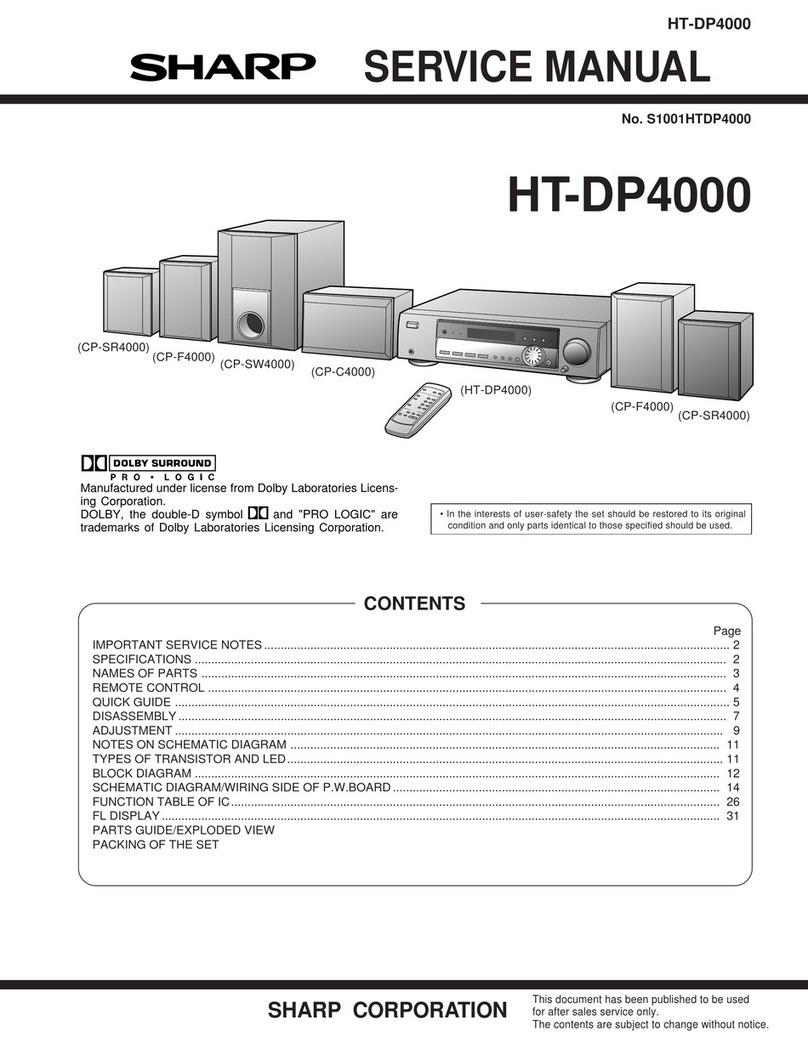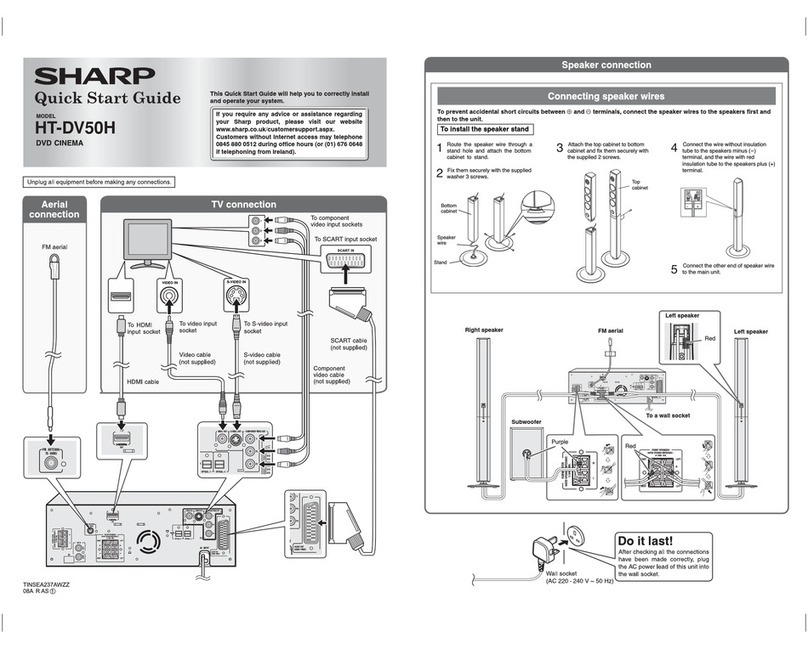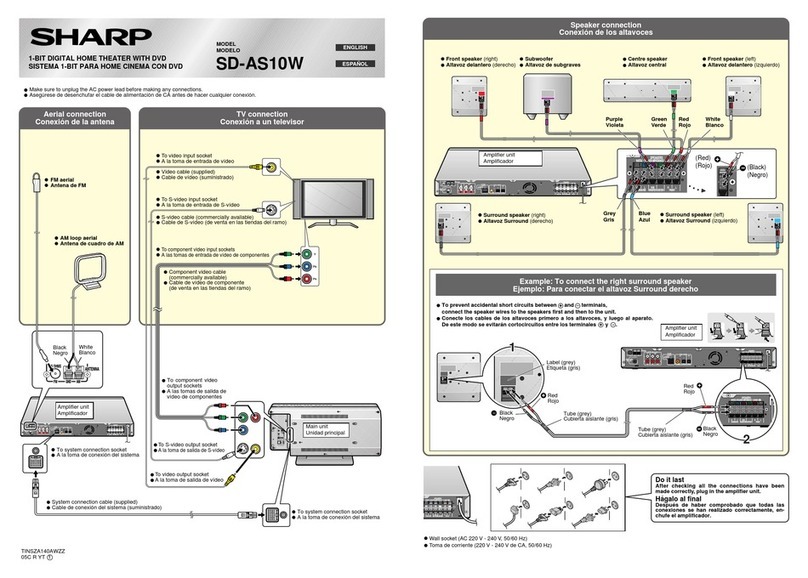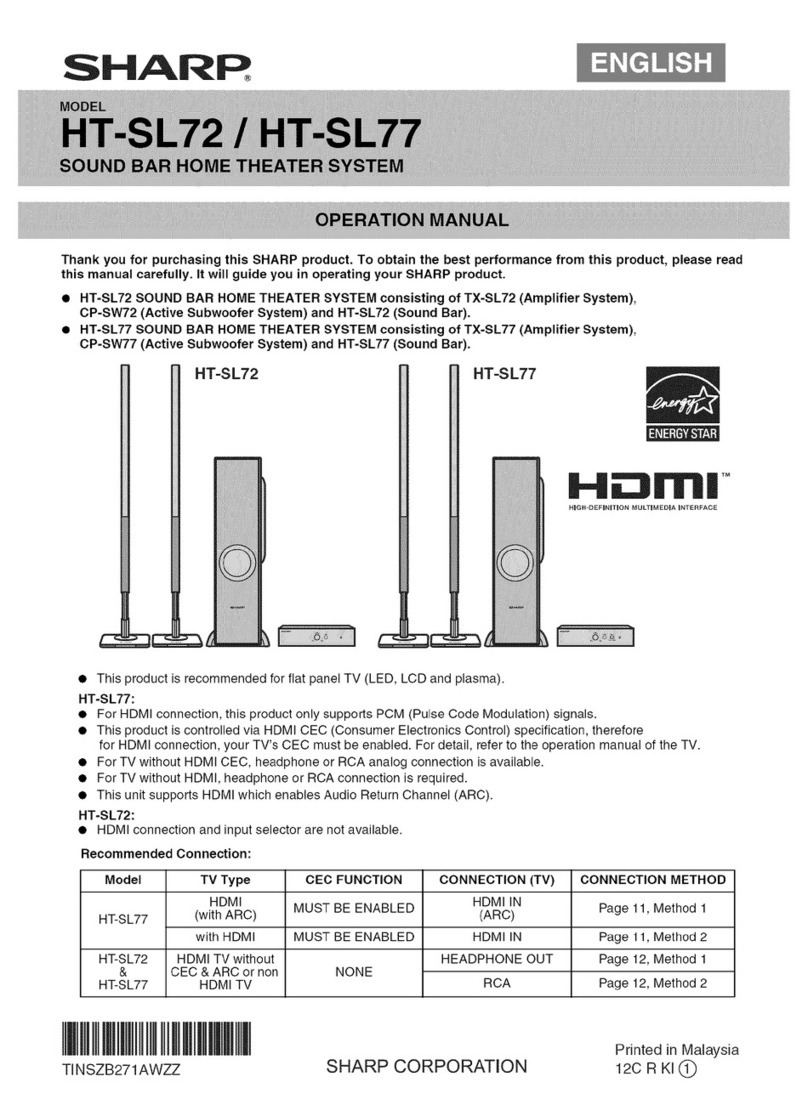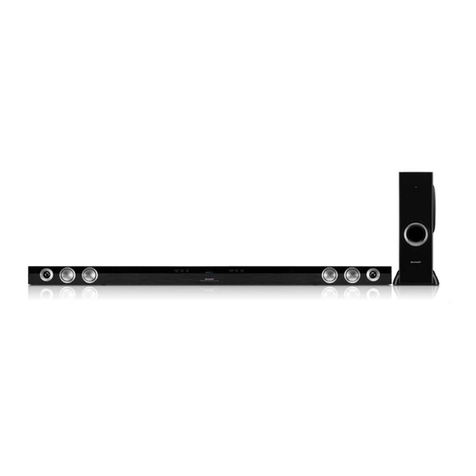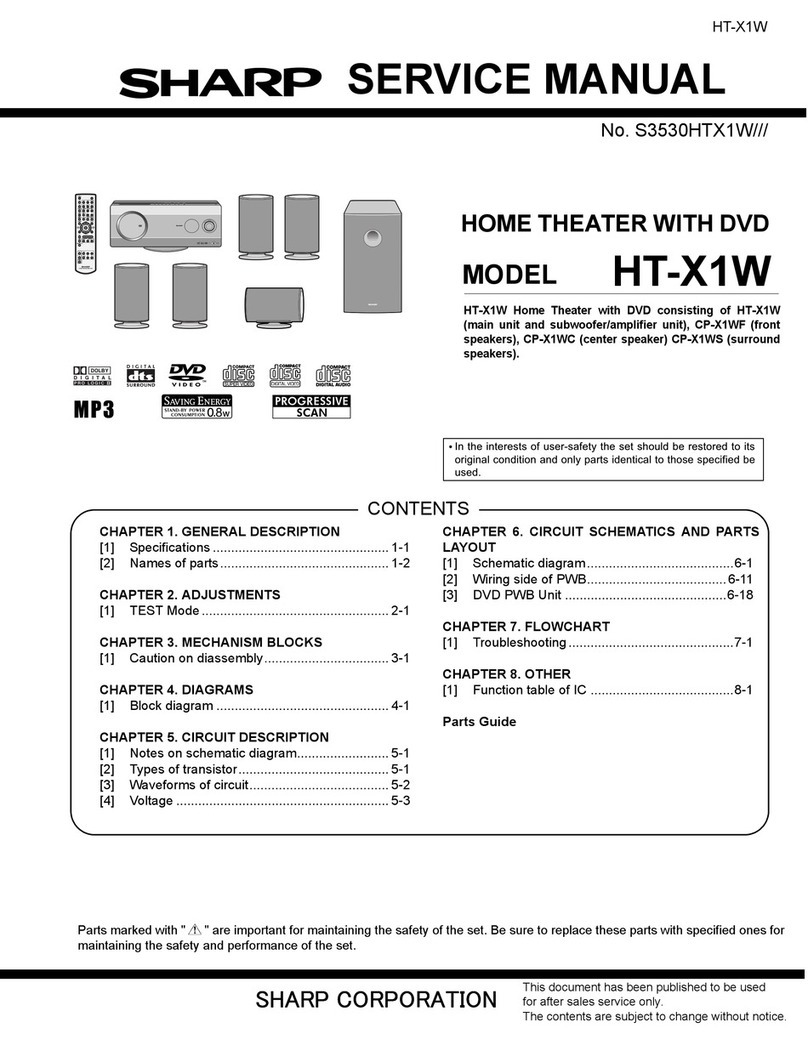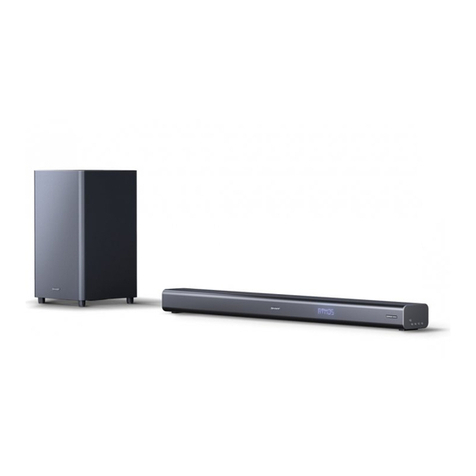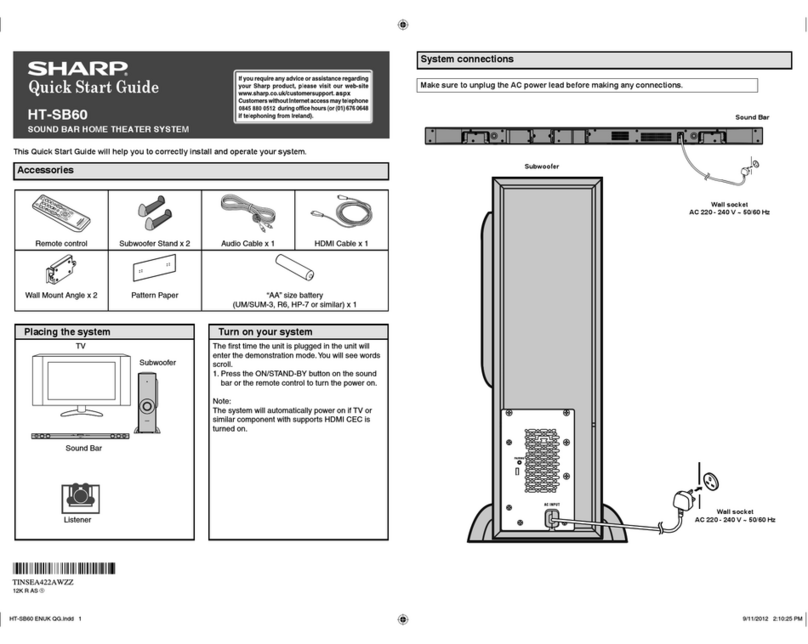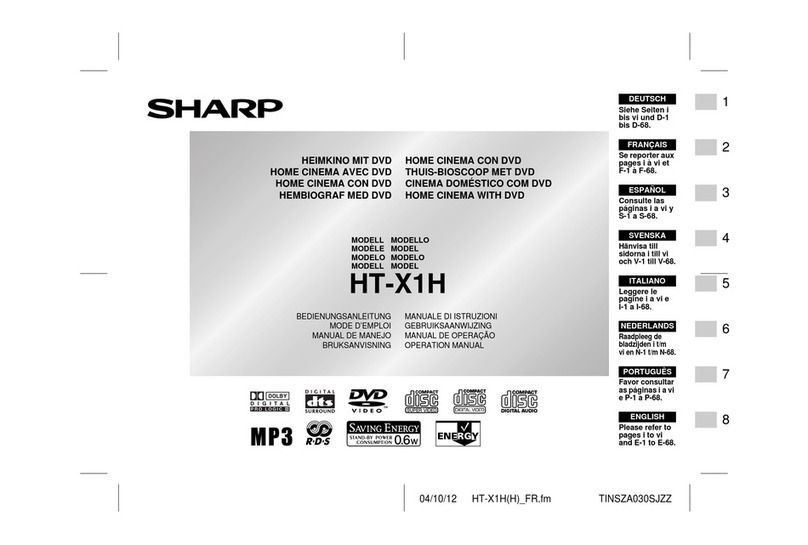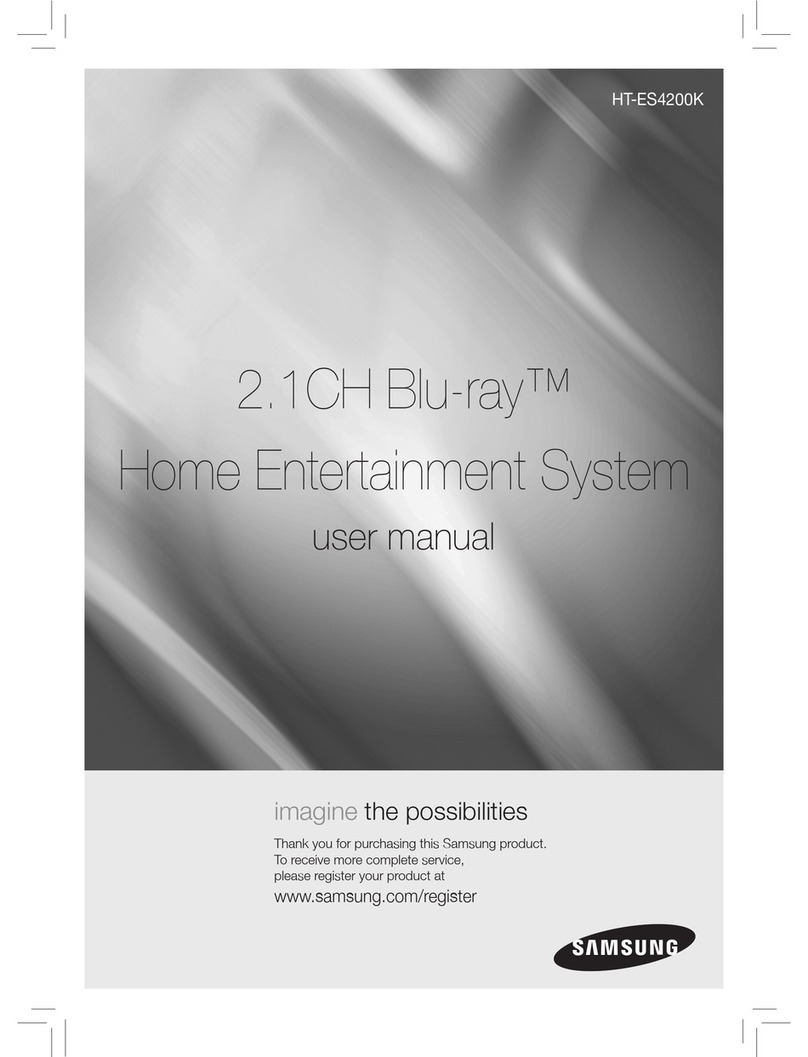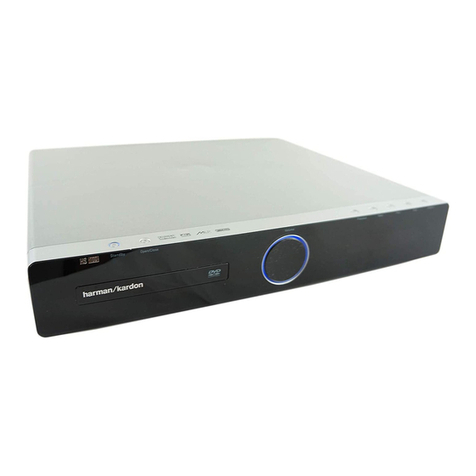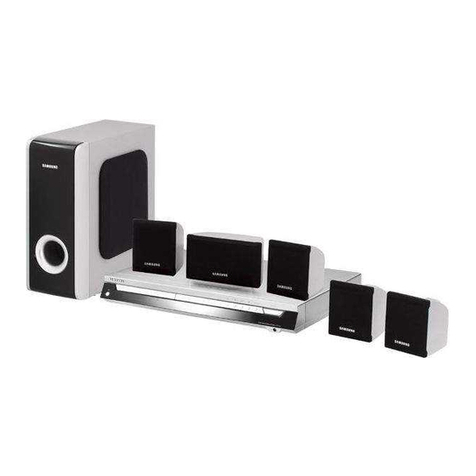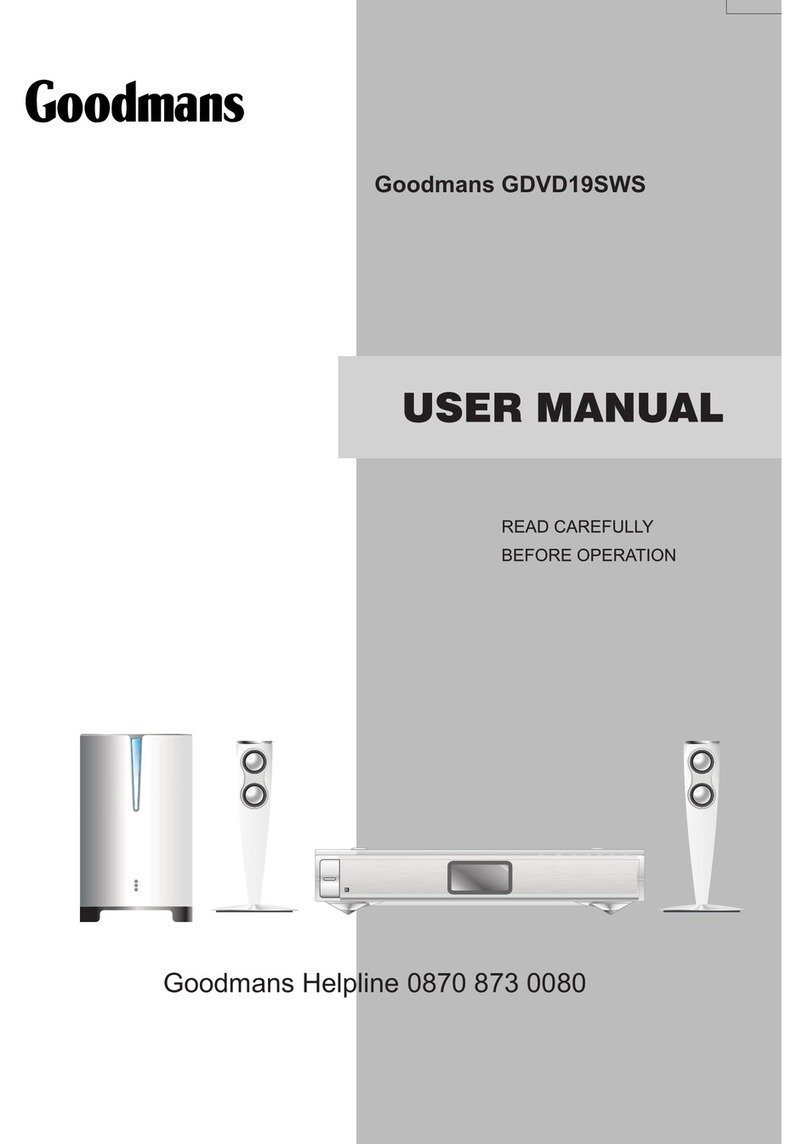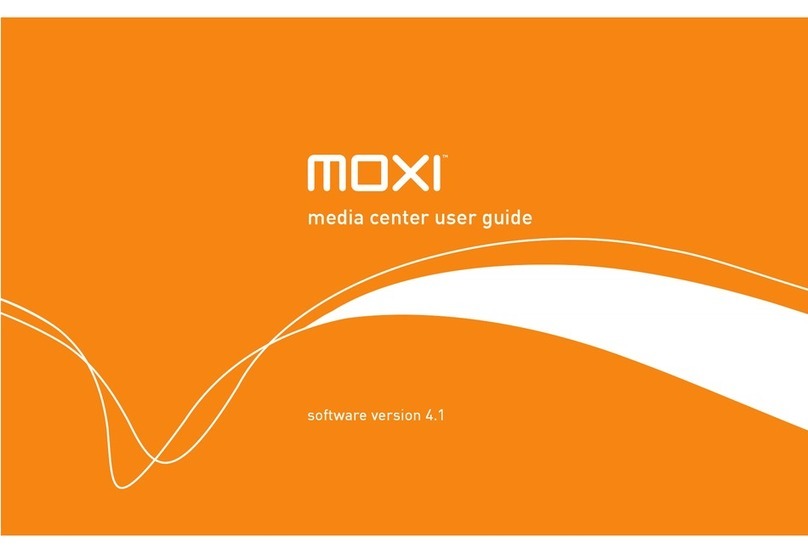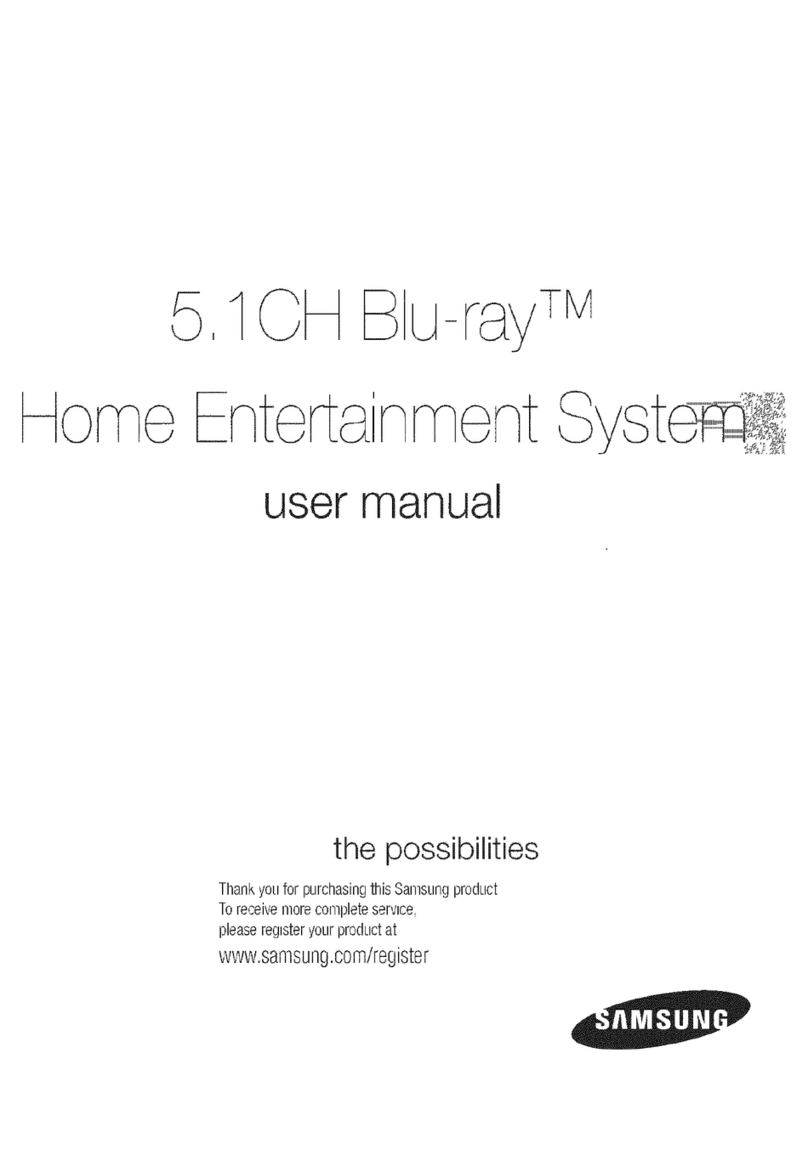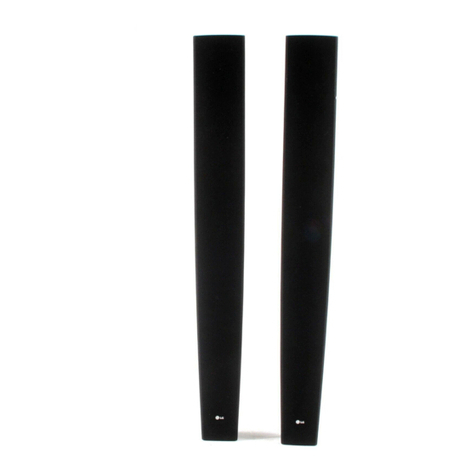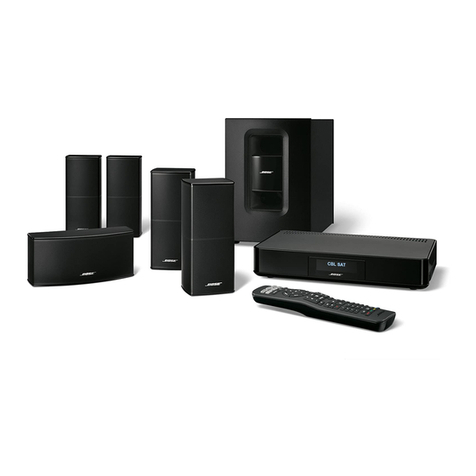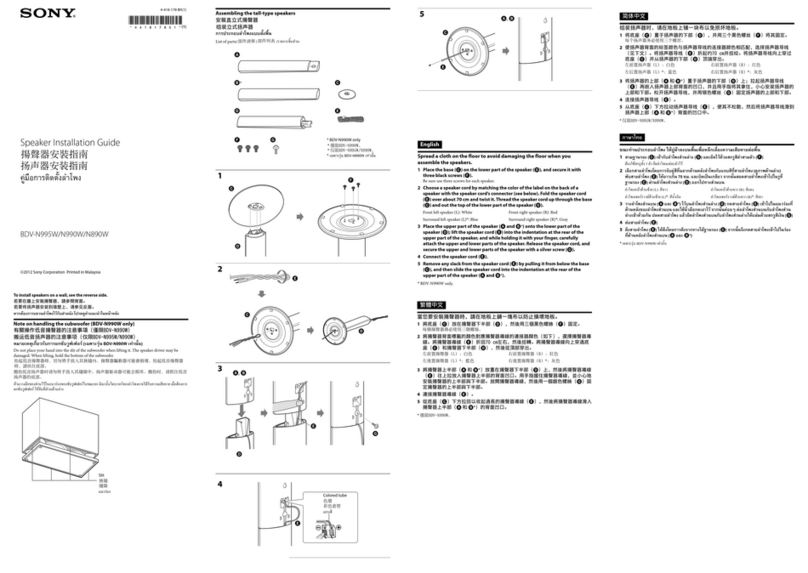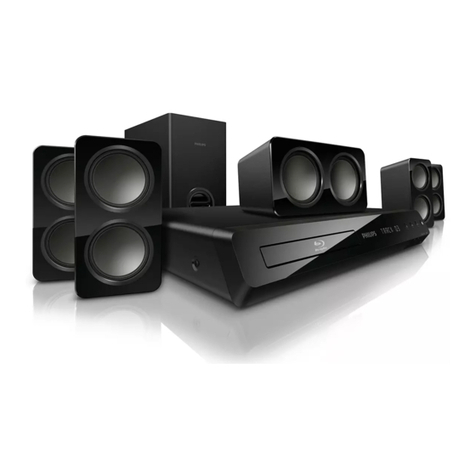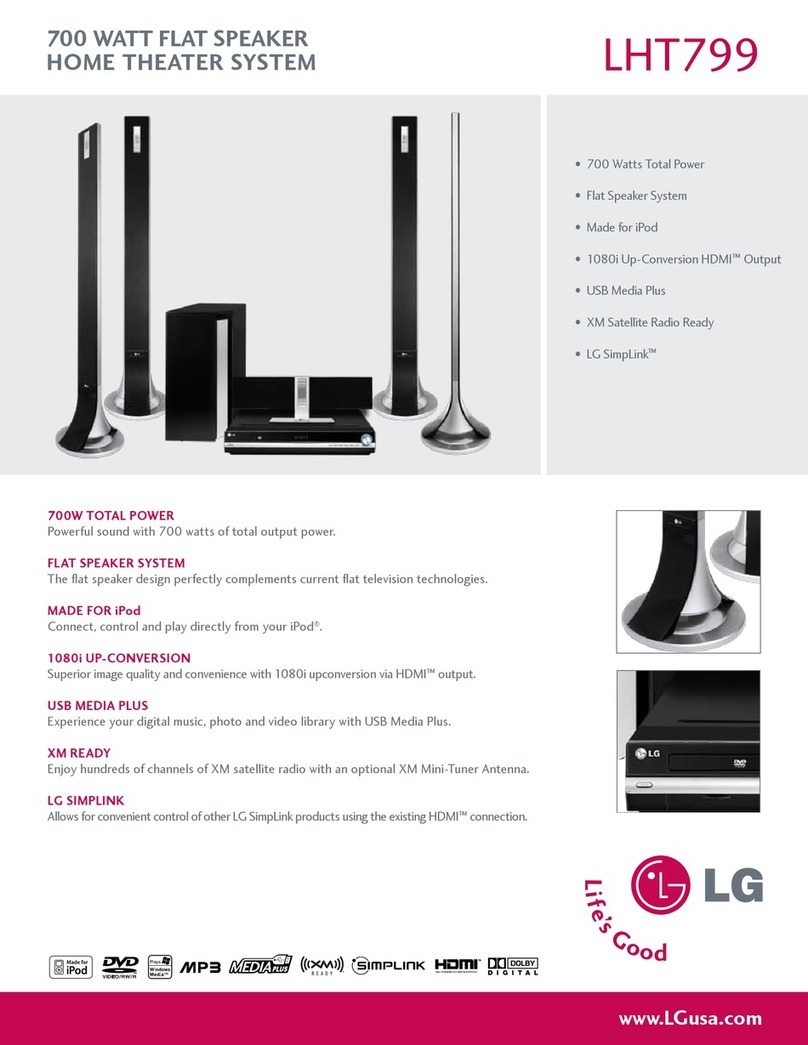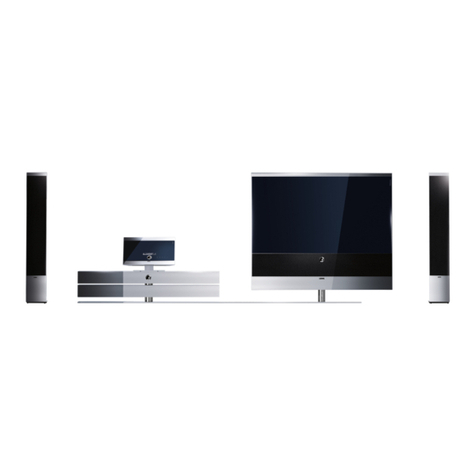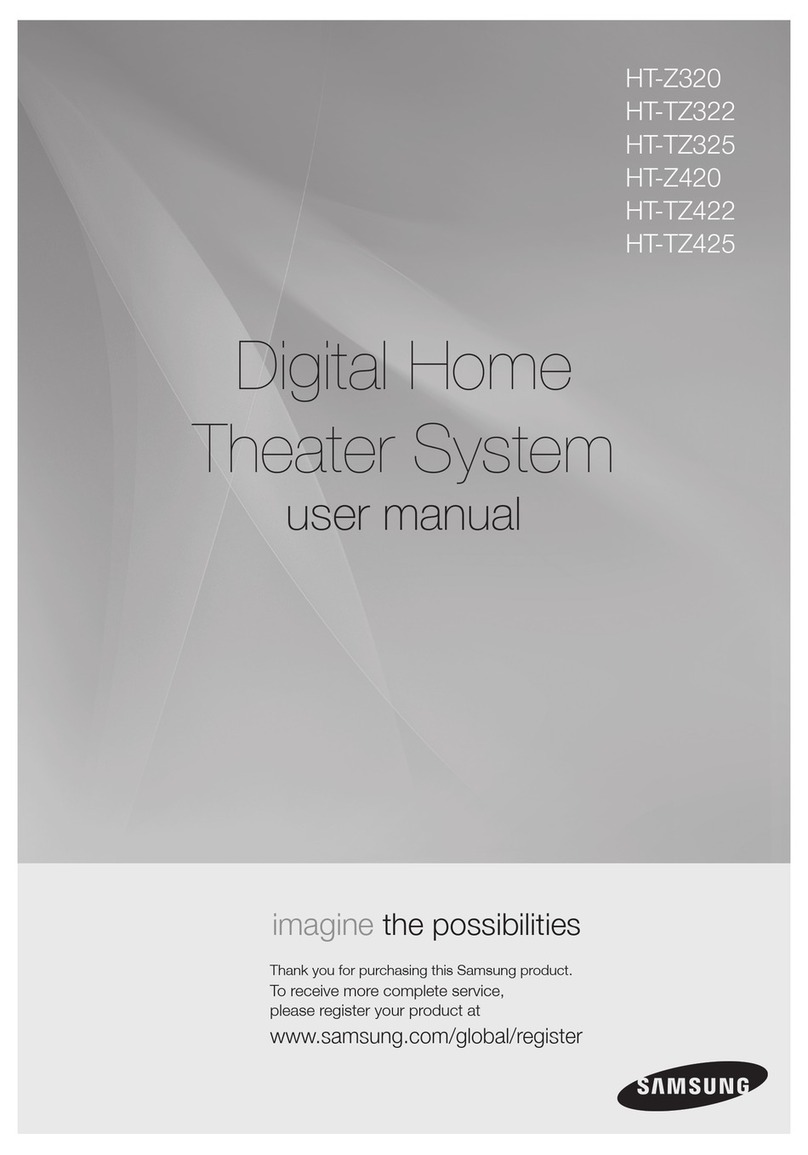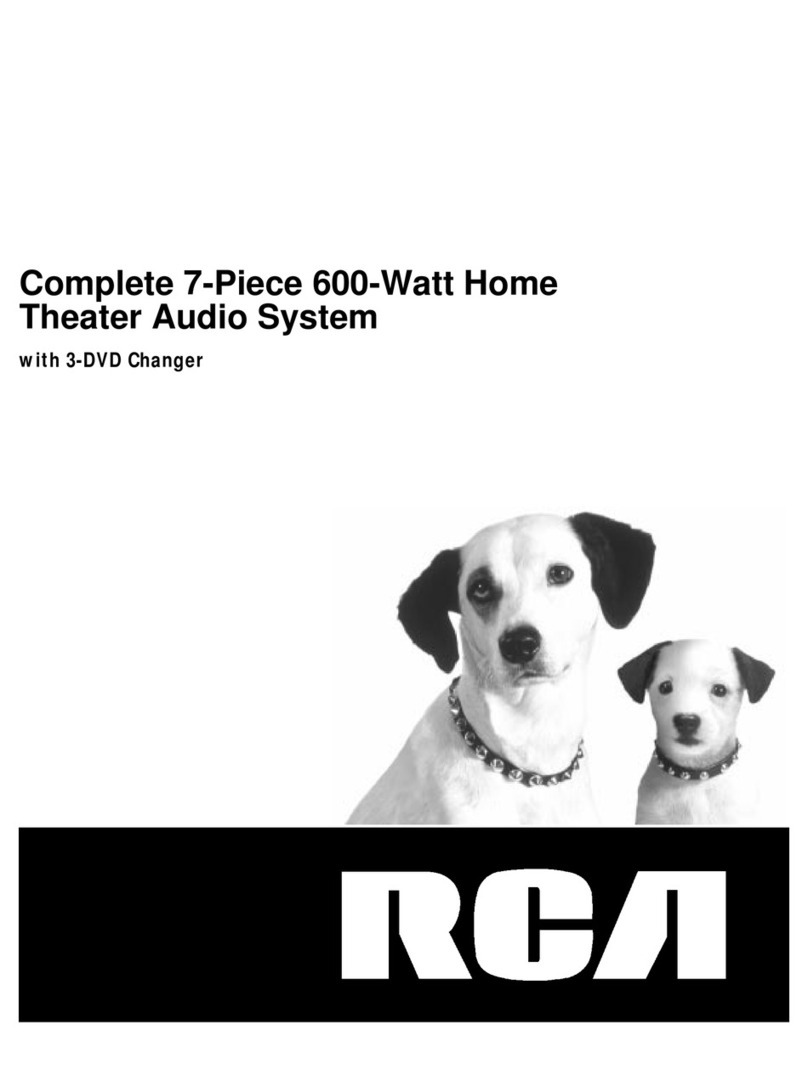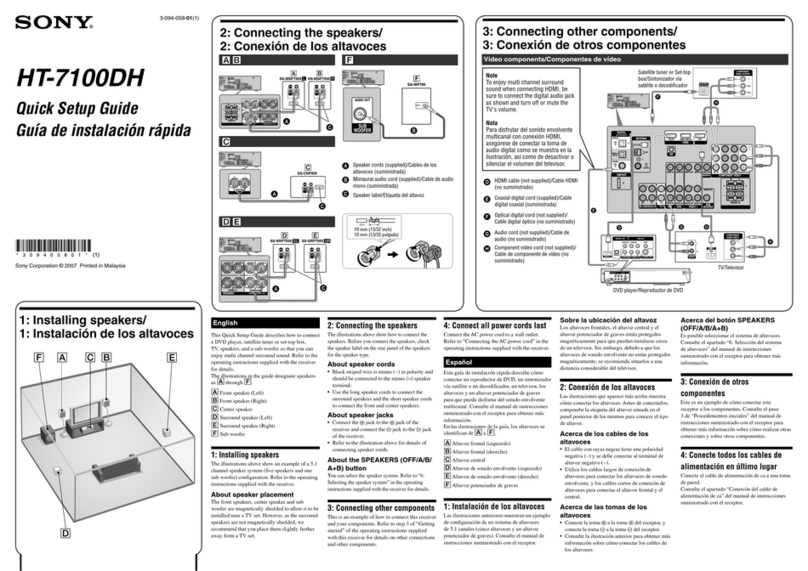
SD-AS10
2 – 2
NOTE: On conventional Sharp audio products, the memory is all ini-
tialized when the microprocessor starts up after entering a test
mode (incorrect memory check bit values are written and then
all memory is initialized by the initializing process). From this
model, the memory is not initialized unless necessary and is
all initialized only when the factory test is performed. However,
the memory is all initialized after exiting some test modes.
Refer to the specification of each test mode for details.
1.3. ALL CLEAR MODE for users (Operation Manual)
Method to enter
1) While in POWER_OFF mode.
2) While hold the [STOP] and [DISC5] button, press [POWER] button.
3) Send to AMP the “ALL CLEAR” code.
4) Go to Power On process and then display “ALL CLEAR” for 1 sec.
5) DVD-SYSTEM and AMP MICON RAM are cleared the all.
6) After that go to power off automatically.
2. Factory TEST Mode
2.1. Outline
All settings in the memory (including those preset) return to their
defaults.
2.2. TEST Mode Operation
When entering the factory test mode,
1. Data in the backup memory is all cleared and the power turns on
(this is the early stage of the system startup).
Key code for this test is sent to AMP.
2. Preset stations in the tuner preset memory on the EEPROM are
cleared.
When the DVD function is activated and the DVD Wake-Up data
(0x86) is received from ESS, the [Factory Reset] command (0x7A)
is sent to ESS.
Then the program version is sent to the system, which appears on
the LCD for at least 2 seconds (remains until the changer is initial-
ized).
3. The changer is set to the initial position.
The drum is stored into the unit (home position).
The mode cam gear moves to the No. 3 position.
4. After all the above processes are correctly completed, “COM-
PLETE” appears with all the buttons disabled (power can be turned
off).
5. When all the above processes cannot be completed correctly:
1) When communication cannot be established in the DVD func-
tion setup and the process results in an error, or when
DISC_ERR is sent back.
2) When the changer cannot be initialized and a corresponding
error is detected.
In either situation, “ERROR” appears for 3 seconds with all the but-
tons disabled (power can be turned off).
2.3. Supplementary Note
1. During the process, all the buttons are disabled.
2. Send the [Factory Reset] command to ESS. The display similar to
“VER:4.1.31.1 S-USA00x” appears on the TV screen. The last 3
digits 00x indicate the firmware version. For example, 001 = Ver
0.01, 101 = Ver 1.01.
Data - “title (41)”, “chapter (31)”, “minute (00)” and “second (0x)”-
will be sent to the system microprocessor side.
3. Refer to minute data (0 x 21) and second data (0 x 22) from MPEG
to obtain the DVD program version number, which appears on the
LCD as “DVD Ver: XXX”.
3. AMP TEST Mode
3.1. Outline
In this test mode, all controls except volume control function the same
as when the power normally turns on.
The volume increases or decreases in four steps (0, 1, 24 and 40).
3.2. TEST Mode Operation
1. In the test mode, the power turns on with DIGITAL 2 active. The
DIG2 function key code is sent to turn on the AMP side with DIG2.
2. The volume is 24 (-16 dB) and the surround mode is stereo mode,
which is selected when the DIG2 key code is sent.
3. The volume increases or decreases in four steps (0, 1, 24 and 40)
when the volume control button is pressed. Also in this test mode,
the maximum volume is set to -3dB depending on the surround
mode and audio format (refer to “Volume Control” and setting of
DSP trim value is processed (refer to “2-12-9-3. LEVEL setting” in
the same way as the normal operation.
First, the VOL1 value is sent to AMP.
4. “AMP TEST” appears in the 8-digit display field in the lower part of
the LCD for 3 seconds and switches to “DIGITAL 2” (message con-
tinues to switch in the same way as the normal operation).
• When an error occurs, a message remains until the error is
solved.
5. When the power button is pressed, the test mode is exited.
The volume setting returns to the default next time the micropro-
cessor starts up (other settings remain).
4. KEY TEST Mode
4.1. Outline
This test mode is to make sure the system microprocessor recognizes
keys on the main unit correctly.
4.2. TEST Mode Operation
1) When entering the test mode, all LEDs on the main unit light for 3
seconds.
2) A key code KEY TEST is sent to AMP to start it up.
3) When the POWER button is pressed and the power turns off, all of
65 x 65 dots on the LCD light for 10 seconds and the test mode is
canceled.
5. TUNER TEST Mode
5.1. Outline
In this test mode, the power turns on as it normally does and the tuner
function is activated. Settings are the same as in the normal operation.
The only difference is that the following frequencies are preset.
Detection
Range (HEX)
Key Test
Mode
Key Test
Mode
Key 1 Key 2
0~ FF KEY1-1 VOLUME
DOWN
KEY2-1
1E~ REW KEY1-2 VOLUME
UP
KEY2-2
38~ STOP KEY1-3 DISC 1 KEY2-3
5B~ PLAY KEY1-4 DISC 2 KEY2-4
7E~ TUNER KEY1-5 DISC 3 KEY2-5
A2~ FUNCTION KEY1-6 DISC 4 KEY2-6
C4~ EJECT KEY1-7 DISC5 KEY2-7
E6~FF KEY-OFF No display KEY-OFF No display
